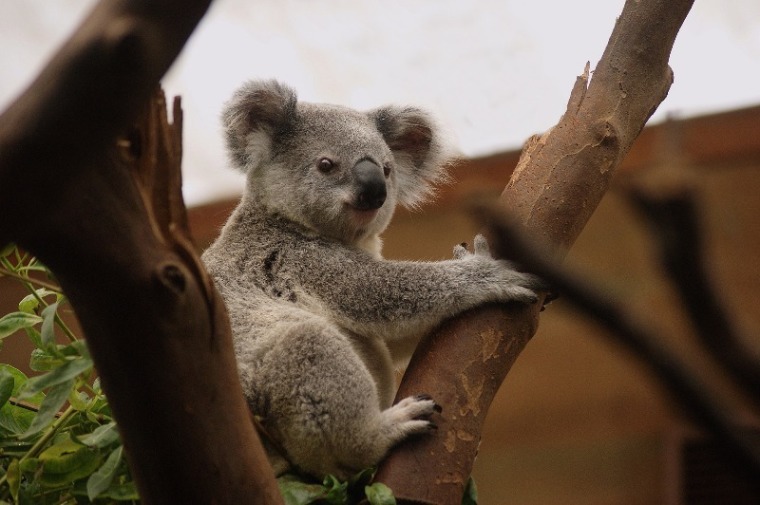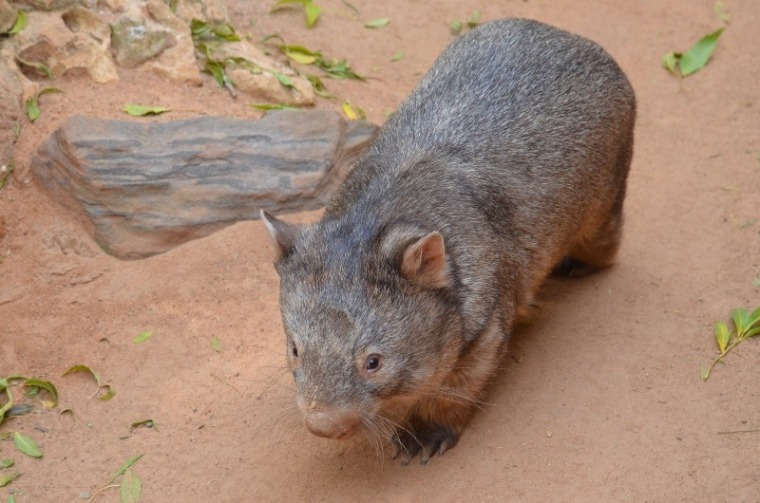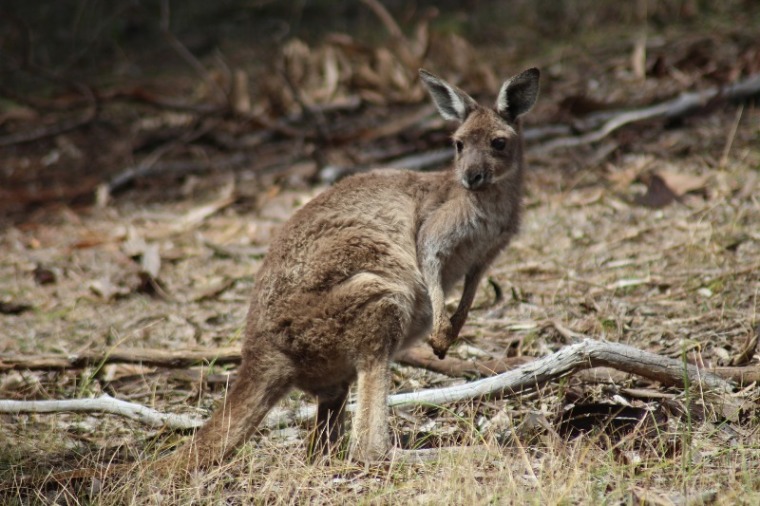
Over many years we have discussed our native animals becoming pets.
The Huffington Post ran a story recently of a family (actually mum) who were raising an orphaned Kangaroo joey and the drama involved with special Kangaroo joey milk, travelling, mixing it with the three kids and a brave husband.
Over the years, along with many television programs, I have read, heard or seen many such stories on Australian marsupial pets that were great fun for a time but eventually found their way back into their Australian habitat.
Anneabelle Hickson concludes - "I've heard of one kangaroo that loved to play football .... I am hopeful she will be open to a bit of soccer before she happily and healthily hops back into the bush."
So this raises an interesting question, quite apart from those specialist places where raising Australia's own indigenous breeds are specifically set aside and such needs, they are not for the most domesticated-able - Wombats, Wallabies. Kangaroos, Emus, Echidna, and the rest of them.
Even in biblical times people had pets such as the puppy, as today, and we know from antiquity there were notables with pet big cats and Elephants and whatever. But the Australian versions of native animals have never taken off.
A recent article in the Sydney Morning Herald stated that keeping native animals as pets would be legalised under a plan put to the NSW government that would remove licence requirements for native birds, reptiles and some mammals and focus instead on educating pet owners.
Although criticised in some 'expected' quarters, a system is proposed whereby low-risk native pets can be kept without a licence providing the owner knows how to keep them, and they are abundant in the wild. Australia's Rob Brewster says "re-wilding quolls were legalised as kept animals in Victoria last year and encouraging them as pets would help the endangered species' survival. He argues that the eastern quoll, considered extinct on the mainland, is the perfect native substitute for the household cat."
Political
ABC news reported that in March this year Senator David Leyonhjelm's remarks to parliament advocated the keeping of native animals as pets – many thought were timely. Convict Creations says one of the most popular pets is the sugar glider. Because they are social animals, they bond very well with humans. They are also intelligent, playful, inquisitive, cute and relatively clean. They eat nectar, fruit, insects and even small rodents, so are quite easy to feed.
Moreover it says, the rock wallaby is another popular pet. In Australia, it is endangered and it will probably go extinct in the bush in the near future. Fortunately, they are sold as pets in Japan so their survival is assured. Breeding pairs have also ended up New Zealand, Hawaii, the Isle of Man, Ireland, Scotland, and England where they have escaped to form wild populations.
Because they reach heights of around 55 cm, they are not the ideal marsupial pet. Their size gives them quite a good ability to escape enclosures. This is one of the reasons why they have gone wild in other countries.
It goes on, Wombats are not really suitable for suburbia where they would need to be fenced in, but would soon make a mess of the fences. They are; however, great on plots in the country where they do a good job in keeping the grass down that would either become a fire or snake hazard.
From our own experiences in Moruya on a 10 acre allotment, Possums were semi-pets. They would come out at night and eat the bird seed and be very friendly, they got use to us and we them. They never came inside, but allowed us onto the veranda and very close to them. They often had babies on their backs.
And it is claimed that up until the 1950s, Tasmanian Devils were often kept as pets. Owners found that they responsed well to kindness but poorly to harsh corrective measures. But Koalas are a no-go due to their special dietary needs. There are many Kangaroos and Wallabies at Caravan Parks all over Australia – none are kept as pets – but they are all pets and feel very secure around people coming and going.
I recall when a locomotive engineman driving the heavy laden steel trains up the mountain line from Unanderra (Wollongong) to Summit Tank (towards Robertson and Moss Vale) that one of the homes on the hills of Unanderra kept a pet Wallaby. It would follow whoever to the clothes line. It was there for years - however they kept it maintained with food and exercise was a mystery. It may have been a registered nursery?

Anecdotal
The article stated: "RSPCA Australia is opposed to the keeping of wild, native or introduced animals as pets or companions. Native animals require equally high standards of care as do any domestic pet, however it is much more difficult to adequately provide for them. In many cases they require specialised husbandry and facilities to mimic their natural environment and meet their physiological and ecological requirements. Most people do not have the skills, experience and facilities to do this (something evidenced by the difficulty many people have in providing adequate care for traditional types of companion animals)."
Many disagree claiming this is much the same as any statutory authority whose seemingly sole purpose is to protect the organisation and its administrators. There is a lot of anecdotal evidence with a very different view.
Burke's Backyard in years past says this on its web site: Within Australia there are complicated rules and regulations governing the keeping of native wildlife as pets. These vary from state to state. Recent proposals to allow the keeping of native animals as pets have sparked a fierce debate between those who support the idea and those who strongly oppose it.
One argument for keeping them as pets - it would help to save some animals from extinction (there are quite a few good reasons). Against is that they are not suitable for such a purpose and many Australian native animals have complex and highly specialised dietary requirements, which ordinary home owners would find difficult to provide.
To summarise, Ben Luxton, Vertebrate Biologist at the University of South Australia, has first hand knowledge when it comes to keeping a range of native animals. He thinks that some native wildlife make better pets than others do, and it depends on what you want from a pet.
"Most native animals won't rush to the door to welcome you home, but many bond well with people and some show affection. Reptiles and birds are particularly suitable, as well as some mammals. Ben recommends Green Tree Frogs, Bearded Dragons and other large skinks, Hopping Mice and Pythons. He says that although Flying Foxes are a bit smelly, they are very loving and affectionate and make great pets.
"He does not recommend Hairy Nosed Wombats, as they often bite as adults. They also have no reverse gear, and tend to dig up the carpets and put holes in the walls. He also would not recommend keeping any of the venomous snakes as pets."
There we are
Personally, I think I'll keep to the television wild life shows that depict specialist groups and persons who have the where-with-all to look after such of God's wonderful creatures – registered or otherwise.
Some of these specialists care for orphans, some raise them to go back into the world. There are ample biblical references to animal husbandry, the environment and such like that good old common sense should prevail – Koalas no. Quolls instead of cats, yes!
And a big yes to protecting them all from wayward dogs and cats, the traffic, and anything else that endangers them. The sick or injured need our help! Call 'Wires' or "Native Animal Rescue".


Dr Mark Tronson - a 4 min video
Chairman – Well-Being Australia
Baptist Minister 45 years
- 1984 - Australian cricket team chaplain 17 years (Ret)
- 2001 - Life After Cricket (18 years Ret)
- 2009 - Olympic Ministry Medal – presented by Carl Lewis
- 2019 - The Gutenberg - (ARPA Christian Media premier award)
Gutenberg video - 2min 14sec
Married to Delma for 45 years with 4 children and 6 grand children